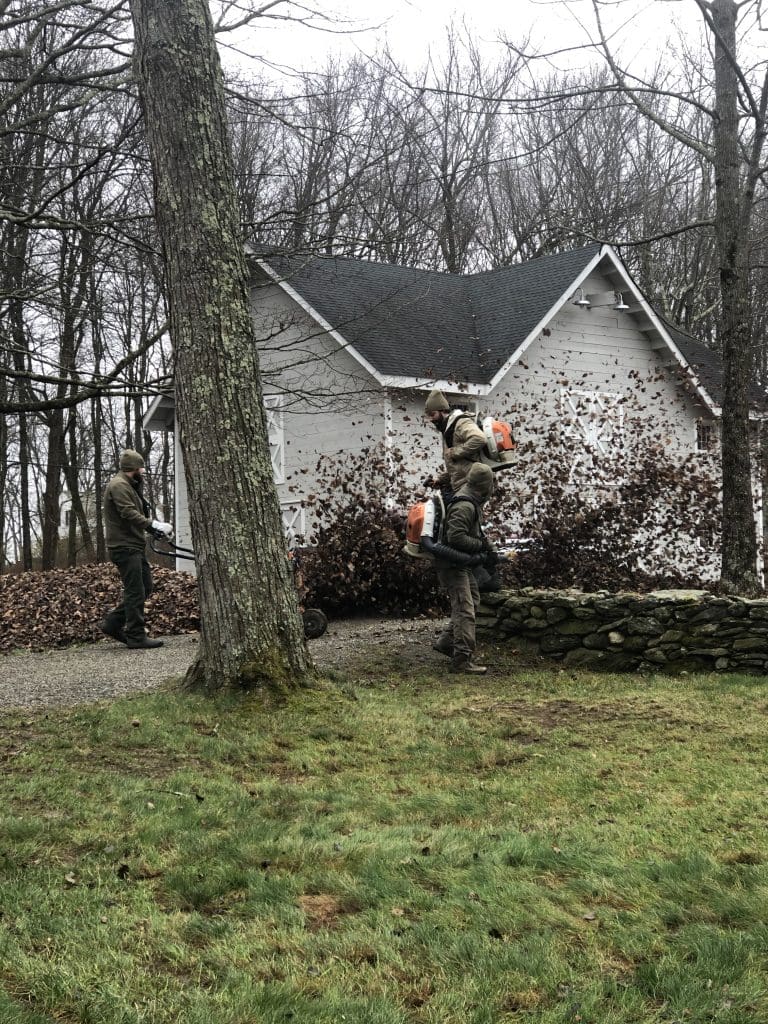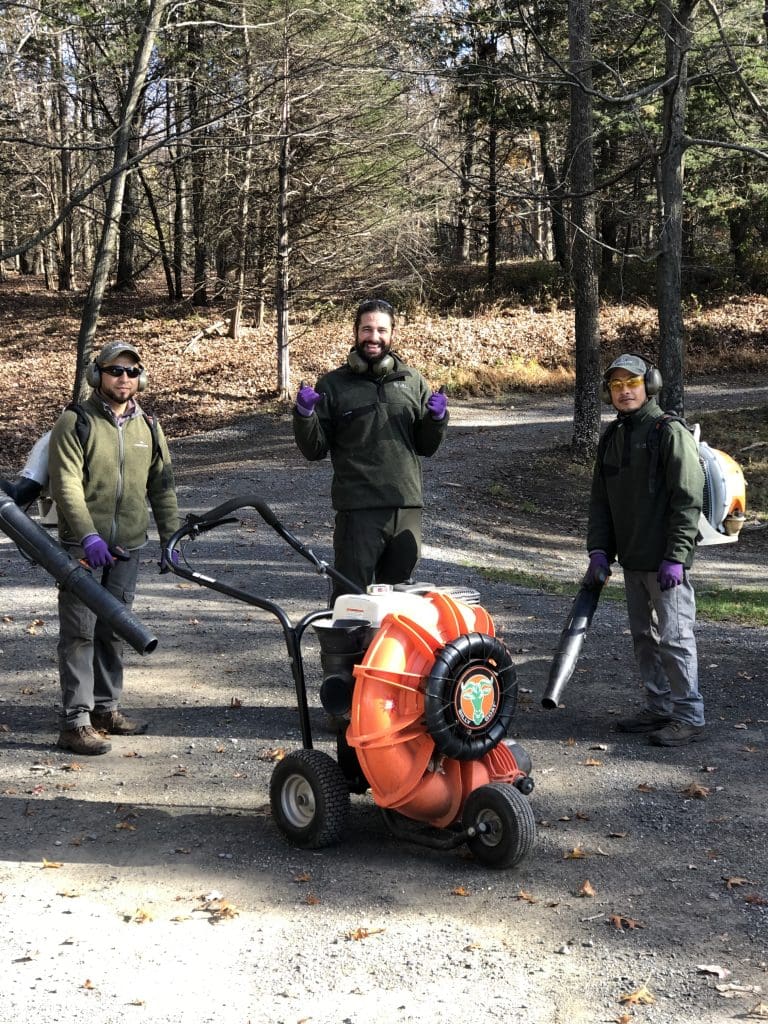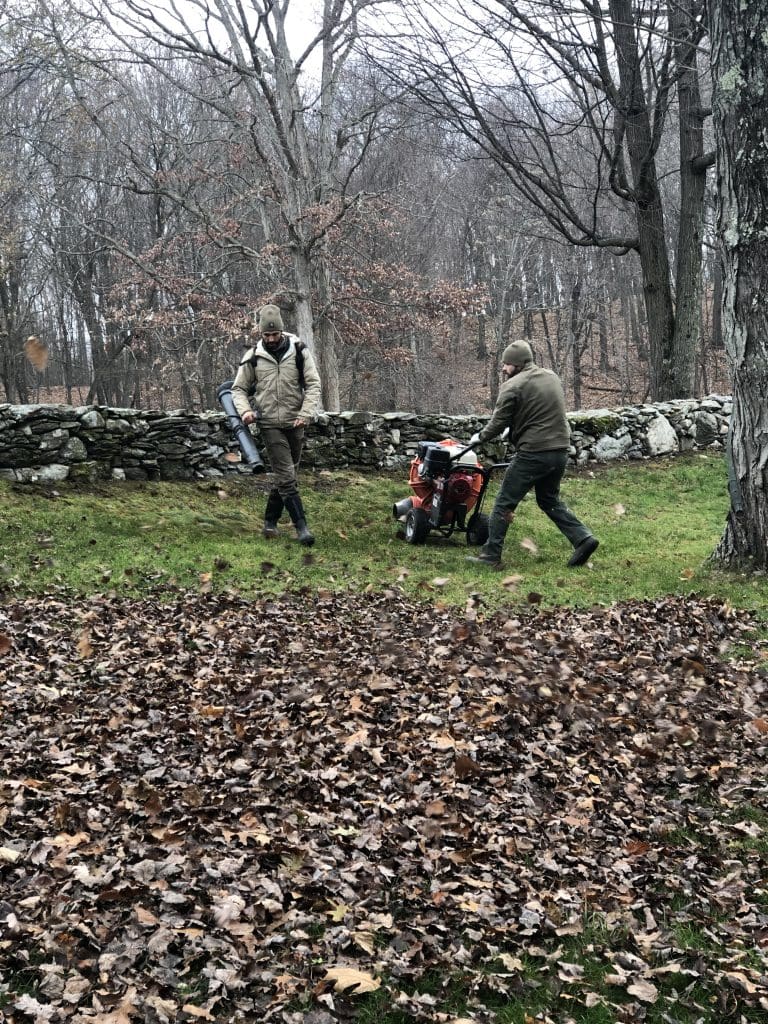
Sponsored Content
Depending on your location, the start of fall cleanup season varies, but sooner or later, the leaves will be falling, and customers will be calling. The question is – are you prepared to make the most of it?
Michael Bedell, owner of Bedell Property Management, LLC, based in Milford, Michigan, says since he’s scaled back the size of his company, he has opted to focus on servicing their existing clients. He says less-than-optimal weather has plaid a part in limiting their availability to seek out additional work.
Similarly, Jenneka, Janna and Jared Temkin, sibling co-owners of J&J Property Pros, based in Salt Point, New York, say most of their fall cleanup work is part of their all-encompassing maintenance package for existing clients, but they will work with new clients that reach out to them through their website.
Estimating Effectively
Bedell says the key to estimating fall cleanups effectively is intimately understanding his business’s costs by utilizing a budget and understanding the direct costs of each job.
“For cleanups particularly, we anticipate having to perform the service in less-than-ideal site conditions and offer pricing accordingly,” Bedell says. “Anyone who has made it through a few seasons of cleanups can attest that wet leaves slow down the process.”

Jared Temkin agrees wet leaves are significantly harder to move and can drastically impact your estimate as far as how long the job will take. He advises adding padding to the estimate since you’ll never know what the season will look like.
“Last year, all the leaves were dry,” Jenneka Temkin says. “So one of the estates that took us eight hours literally only took us four. So, there’s a huge difference when you have dry leaves or wet leaves.”
The skill level of your crews will also impact the speed at which jobs can be completed. Jared suggests partnering new employees with more experienced crews, so this isn’t a major issue.
J&J Property Pros opts to do flat rate or fixed pricing rather than an hourly rate. They communicate to the client what all is going into that price.
“We price to stay in business, and that’s what we tell our clients as well,” Jenneka says. “We’re going to bring you quality service with a quality team that’s experienced.”
Considerations that will impact your estimate are factors like if you need to rent any equipment and how much your market can bear.
Where the clients want the leaves blown can impact the cost of the service. The Temkins and Bedell say some customers have wooded areas where the leaves can be blown.
“This not only reduces costs by eliminating hauling and disposal costs but also reduces weeds, keeps the wooded area healthier, and provides a more aesthetically pleasing view for those sites,” Bedell says.
Others may request the leaves removed entirely and this calls for blowing the leave on tarps or a dump trailer, requiring more time and effort. If they do take the leaves off the property, both of the companies say they work with local composting operations.
Bedell encourages finding a mentor to help you with your estimating starting out, so you don’t have to learn everything the hard way.
Right Equipment
For leaf blowing, different properties will call for different types of equipment to get the job done. Not every site will be able to accommodate a leaf vacuum, so you may have to tarp the leaves out.
“Make sure you have the right equipment to tackle larger jobs,” Bedell says. “If you don’t, use it as an opportunity to network with other contractors in your local community and possibly work together to complete those cleanups.”

Jenneka says dump trailers are a typical piece they use to get debris off the property. They will also rent leaf suckers. She recommends leaf vacuums if having to clean up a town or village and there isn’t a space to blow the leaves. She says they recently switched to ECHO’s backpack blowers and also use a Billy Goat to move leaves.
“Since we’ve scaled back in the number of accounts we service, we’ve been able to reduce the equipment needed back down to some rakes and tarps, ECHO PB-9010 blowers, a Hurricane 314, a Billy Goat 18HP self-propelled blower, and an UltraVac Bagger for our Exmark LazerZ,” Bedell says. “All the debris (when necessary) goes in the back of our dump truck.”
As for other fall cleanup services like cutbacks, the Temkins have started using ECHO’s battery-powered hand tools.
“Customers come out all the time and say, ‘Oh my goodness, this is great,’” Jenneka says. “We have a lot of eco-conscious clients too. That’s what also encouraged us to move forward and start looking more into the battery power because our clients and we want to be more environmentally conscious. We also just decided to make that choice for our team as well so they’re not breathing in the fumes. Because cost of fuel went up, it’s just been more efficient for us to use the battery power.”
Jared says the team made fun of it at first, but now they prefer to operate the battery-powered equipment, citing less fatigue. J&J Property Pros uses 12 of the large batteries and that takes them through an eight-hour day of work.
Being Efficient on Site

The wind is a major factor when handling leaf blowing. Jenneka says if you notice the wind keeps blowing the leaves in one direction, stop, regroup and reposition to go in the same direction as the wind.
“Work with the wind, not against it,” Bedell says. “Also, formulate a game plan and discuss it with your team. Quality work can be completed only if everyone understands the game plan and works together to complete it.”
If you have to tarp it or vacuum it, make small, manageable piles and then come back to them with the vacuum or the tarp. Jenneka suggests advising clients have their leaves cleaned up in segments rather than waiting for all the leaves to fall.
“If they do wait for the one fell swoop, you run the risk of if we wait too long and it snows on top of everything that is going be one heck of a spring cleanup,” Jared says.

